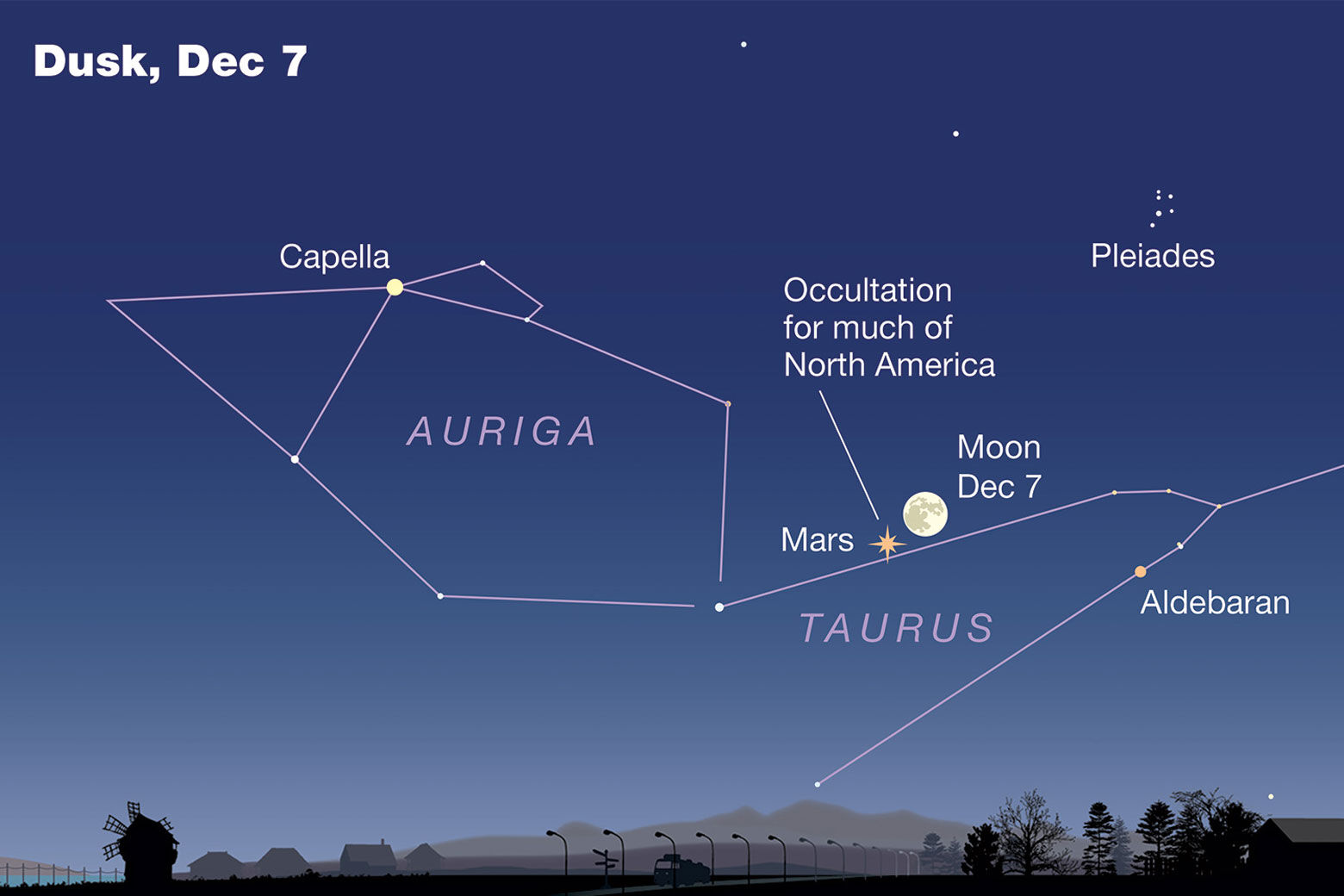The Full Cold Moon — the last Full Moon for 2022 — will meet with bright, reddish-colored planet Mars, high overhead in our sky at about 11 p.m.
The Full Cold Moon is aptly named for the cold temps we feel in the Northern Hemisphere as winter approaches. The forecast in the D.C. area is for partly cloudy skies, so that’s good news for skywatchers.
When the Full Cold Moon happens, Mars will be very close to the Moon in the sky. For much of North America, but alas not the DMV, the Moon will actually pass in front of Mars, known as “occulting” the Red Planet. In our area, Mars will be much less than a finger-width away from the bottom of the Moon, and closest at about 10:43 p.m. EST. If you have binoculars or a small telescope with a wide-view eyepiece, the view will be striking.

The occultation of Mars by the Full Cold Moon will be livestreamed by a number of organizations.
Earth will also pass directly between Mars and the Sun Wednesday at 11 p.m., marking the opposition of the Red Planet. The two planets were closest to one another on Dec. 1 — about 51 million miles. Mars will continue to be bright in our sky for the next few weeks, and then begin to pull away from Earth and start to dim.
And be sure to tune in Sunday at 11 a.m. EST for NASA’s coverage of the splashdown of Artemis I off the coast of San Diego. The uncrewed mission to the Moon has been picture-perfect so far in terms of the Orion spacecraft’s performance and the literal “out of this world” pictures it has taken.
I’ll be at sea next week, headed for the Caribbean via the Bermuda Triangle, and I’ll be on the lookout for the Geminid Meteor Shower. The peak will be the night of Dec. 13-14; I’ll have more on that next Monday.
Follow my daily blog to keep up with the latest news in astronomy and space exploration. You can email me at skyguyinva@gmail.com.







